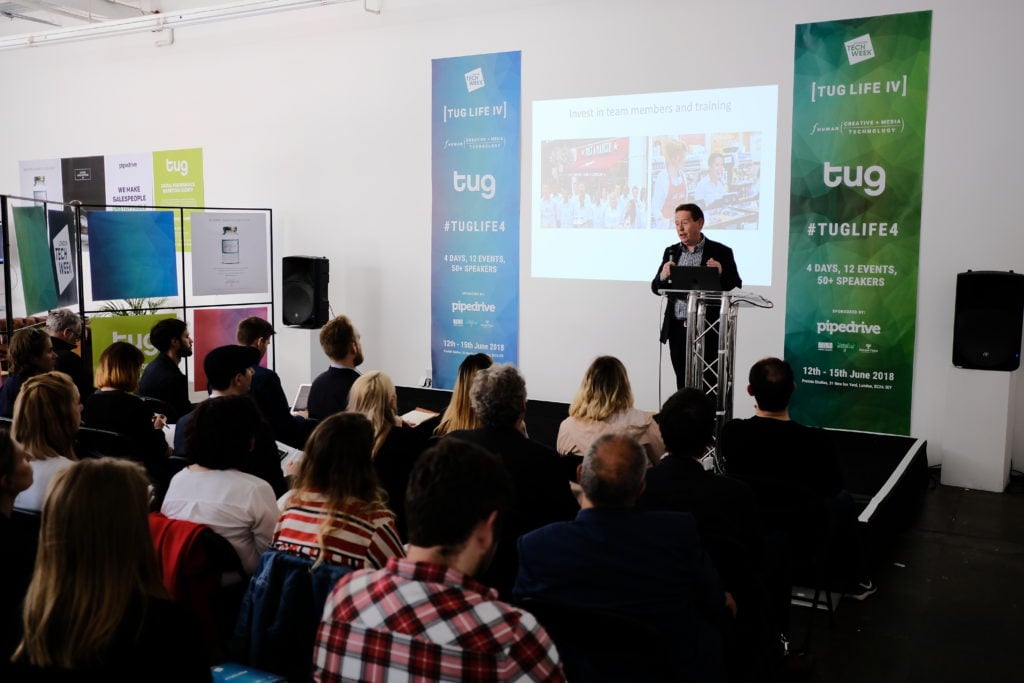Does anyone enjoy shopping anymore? 6 thoughts from Tug Life’s Retail event
Invest in product and proposition
For Pret A Manger, success depends on creating a delightful shopping experience for the customer. Mark Palmer from Pret told the audience “we don’t really have a marketing budget” – which might come as a surprise considering Pret is 32 years old and has over 520 shops around the world.
But Pret puts that money instead into investing in shop design and refurbishment, customer service, technology, things that excite customers, and training team members. They “empower the team to surprise and delight customers.” Mark believes that the stores that will succeed in future are those that look past telling the consumers how great they are, and show them instead.

Mark Palmer from Pret A Manger
Concentrate on human need
David Mattin from Trend Watching reminded us that although technology has advanced hugely in recent years, we’re still the same old humans with the same old human needs. To drive home that message, he showed us how the traffic to PornHub spiked massively after the mistaken missile strike warning in Hawaii.
David showed us how relatively new brands like Finery, which helps users to curate their fashion tastes and recommends clothing and labels based on their preferences, use technology to blend the physical and online retail experience to make life easier. If brands can innovate in ways that serve a basic human need in some way, they will succeed.
Living an authentic brand
David said that “transparency is allowing us to see into the heart of businesses as never before.” Increased demand for transparency means that brands can no longer get away with simply talking the talk, these days they have to walk the walk too.
Ian Jindall of Retail X also emphasised the importance of behaving like “authentic consistent human beings.” For him, this boils down to a new age of retail and consumer engagement, with core human skills amplified by data.
Use data to improve people’s lives
Kieran McIlwain from Three advised the audience to use the data and information gathered to unlock value for the customer. Although many consumers are wary of sharing their personal information, they do want the rewards and personalisation that come with targeted marketing.
Bring the product to the customer
At the moment, marketing has got it all wrong. What is the point of a multi-channel approach if all you’re doing is trying to push the customer to a single place? This was the question Cooper Harris from Klickly asked of us. Instead, she argues that marketers should bring the product to the customer. In the future, “you will not go on a journey as a consumer, the brand will come to you.”
What does this look like? Take what would be ad space and turn it into commerce. Instead of ads in side bars and banners, customers will be able to actually buy products without being dragged away from the site they’re already engaged with.

Cooper Harrison from Klickly
Connecting purchasing with intent
Finally, we heard about how retailers are finally beginning to join the dots when it comes to understanding why consumers bought what they did. In the form of digital receipts. Not only are digital receipts good for refunds, warranties and returns, they create a new digital touch point for the consumer.
Up next is our session on FMCG and packaging at 4pm, followed by our after party from 6pm! We’ll see you there.


